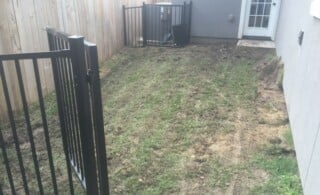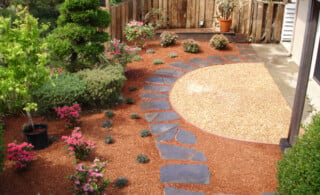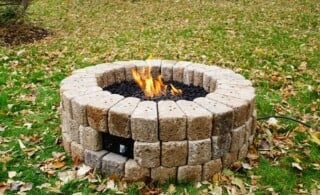For outdoor enthusiasts who also happen to be parents, taking the kids camping for the first time is an almost-intoxicating experience. Seeing their eyes light up at a night sky full of stars or the dancing flames of a bonfire can reignite your sense of wonder at the natural world all around us. Of course, introducing them to new — and counterintuitive — concepts like “leave no trace” can be a little less encouraging.
For that reason and a host of others, like diapers and sleep schedules, most parents don’t introduce their children to their love of nature by taking them camping in Yellowstone. A much more common (and practical) approach for the first family campout is to stay close to home — literally. Backyard camping keeps you in proximity to a bathtub, chicken nuggets, and a warm, comfy bed, just in case things go awry.
Even in your backyard, there are considerations to be made when it comes to keeping your children safe, comfortable, and happy. From choosing the right gear to teaching fire safety to entertaining them without phones or iPads, a kid-friendly campout takes thoughtful planning. When your child has a mental or physical disability, that list may look a little different, but the result is the same: memories of a magical night spent not quite “roughing it.” Keep reading for a few tips to help make it happen.
The Right Stuff
One great thing about camping at home is that you don’t need to spend time looking for accessible campsites. The yard, bathroom facilities, and other features in and around your house are already designed to accommodate your child’s individual needs. Still, if you’re planning on an authentic experience, you’ll probably want to invest in some gear that will allow your child to enjoy the experience to the fullest. As a bonus, when you’re ready to camp offsite, you can take it all with you. Just make sure you purchase high-quality equipment that is well-made and will grow with your child.
- Shelter – If your child uses a wheelchair, look for a large, accessible tent with a wide opening and no lip along the entrance. It may also help if you can access the shelter from the side, as this will make it easier to transfer your child to a cot or sleeping pad.
- Sleeping – In addition to your child’s favorite blanket and comforting nighttime item, you’ll also need a good sleeping bag that is designed for the season. For children with sensory issues, consider investing in a sleeping mat as well. These lightweight, thin mats elevate children off the ground, providing padding and helping a tent floor feel more like a bed. If you have room in the tent, you can also try an air mattress or a cot.
- Temperature – If it’s too warm or cold in your tent, a sensitive child may be extremely uncomfortable. In addition to making it difficult to sleep, this may trigger a sensory meltdown in a child with autism spectrum disorder (ASD) or other sensory issues.
- Terrain – Your property probably isn’t as steep or rocky as a mountain trail, but it can be challenging for children with mobility issues to navigate. For wheelchairs, all-terrain tires can provide better grip. Another option is what’s known as a free-wheel, an additional wheel that attaches to the front of the chair to improve stability.
- Lighting – Children with vision issues, as well as those who fear the dark, will benefit from a well-lit campsite. Use lanterns that don’t get hot, headlamps, and hanging tent lights to improve visibility and calm little campers.
- Sound – While the hooting of owls and howling of the wind may be soothing for some, it can be distracting for children with attention disorders, ASD, or sensory processing issues. Use a portable, battery-powered sound machine (or an app on your smartphone) to play soothing white noise.
Safety First
The next area where parents need to focus on is safety. Nature, for all of its beauty, is full of hazards for little people who are not familiar or experienced with it. For children with special needs who are still learning to master their senses, manage their impulses, and control their bodies, it can be particularly dangerous. Before you decide to lock them indoors for the rest of their lives to protect them, consider taking some steps to make your backyard campground safer.
- Fire – Read up on outdoor fire safety, and teach it to your kids as well. To prevent burns and other fire-related injuries, do not leave children unsupervised while a fire is burning. Surround the fire pit with rocks or concrete blocks to create a barrier between your kids and the fire Finally, always extinguish your fire completely before you go to sleep.
- Sleep – Safe sleep rules still apply outdoors in a tent. Avoid co-sleeping on the same mattress or pad, ensure blankets are not covering your child’s face or blocking airways, and put babies to sleep on their backs.
- Wandering – Some children wake in the night and walk, either because they are curious or because they are sleepwalking. Always zip the tent fully closed. For younger children, position yourself between them and the tent exit. For older children, attach a bell to the zipper.
- Bumps, bruises, and bites – Minor injuries are inevitable, so have a first-aid kit handy. Bug bites, on the other hand, are preventable. Use a repellent with DEET, picaridin, or lemon eucalyptus oil on your child’s skin, and reapply as needed.
Fun Factors
Before you plan an hour-by-hour agenda for you and your kids, remember that part of the beauty of nature is the lack of false stimulation. Still, it’s wise to plan a few fun ways to keep energetic children safely occupied, promote family bonding, and keep them on schedule.
- Routine – The first thing you need to consider when planning your night is that children, especially those with special needs like attention-deficit/hyperactivity disorder (ADHD), thrive on routine and organization. Knowing what to expect calms nerves. With that in mind, keep bedtime as similar to your regular schedule as possible. Sing the same songs and read the same stories, and do it all at the same time you normally
- Special snacks – Your child may not be able to indulge in traditional camping fare like sugary s’mores, nutty trail mix, or juice boxes full of red dye, but that doesn’t mean you can’t share a special snack. Prep some of their favorite foods beforehand, and break them out when your child needs an energy boost. After all, what’s a good campout without a yummy treat?
- Bonfire activities – One of the easiest, best ways to pass the time on a camping trip is to gather together for activities around the fire pit. You can tell stories, play games, or play music. It’s a low-energy activity perfect for winding down before bedtime.
- Everyday fun – If you’ve created a disability-friendly backyard for your child, don’t be afraid to use it. Your outdoor adventure is the perfect time to enjoy some of your child’s favorite everyday activities with them, even if they aren’t particularly “campy.” Pushing them on the swing, jumping on the trampoline, playing in the sandbox, or making mud pies can be a great way to bond with your child.
Camping is one of the best, easiest, most affordable ways to connect with the world around you. Chances are, that’s at least part of the reason you love it and part of the reason you want to share the activity with your children. The good news is that with a little bit of planning, patience, and pure love, you can do just that — right in your backyard.

 Spring Garden Flower Tips and Suggestions
Spring Garden Flower Tips and Suggestions  Plan Ahead for a Better Yard
Plan Ahead for a Better Yard  Dry Well Cleaning & Maintenance Tips
Dry Well Cleaning & Maintenance Tips  Soil Engineers & Testing
Soil Engineers & Testing  How To: Build A Gas Fire Pit in 10 Steps
How To: Build A Gas Fire Pit in 10 Steps 

Are You Familiar With This Topic? Share Your Experience.